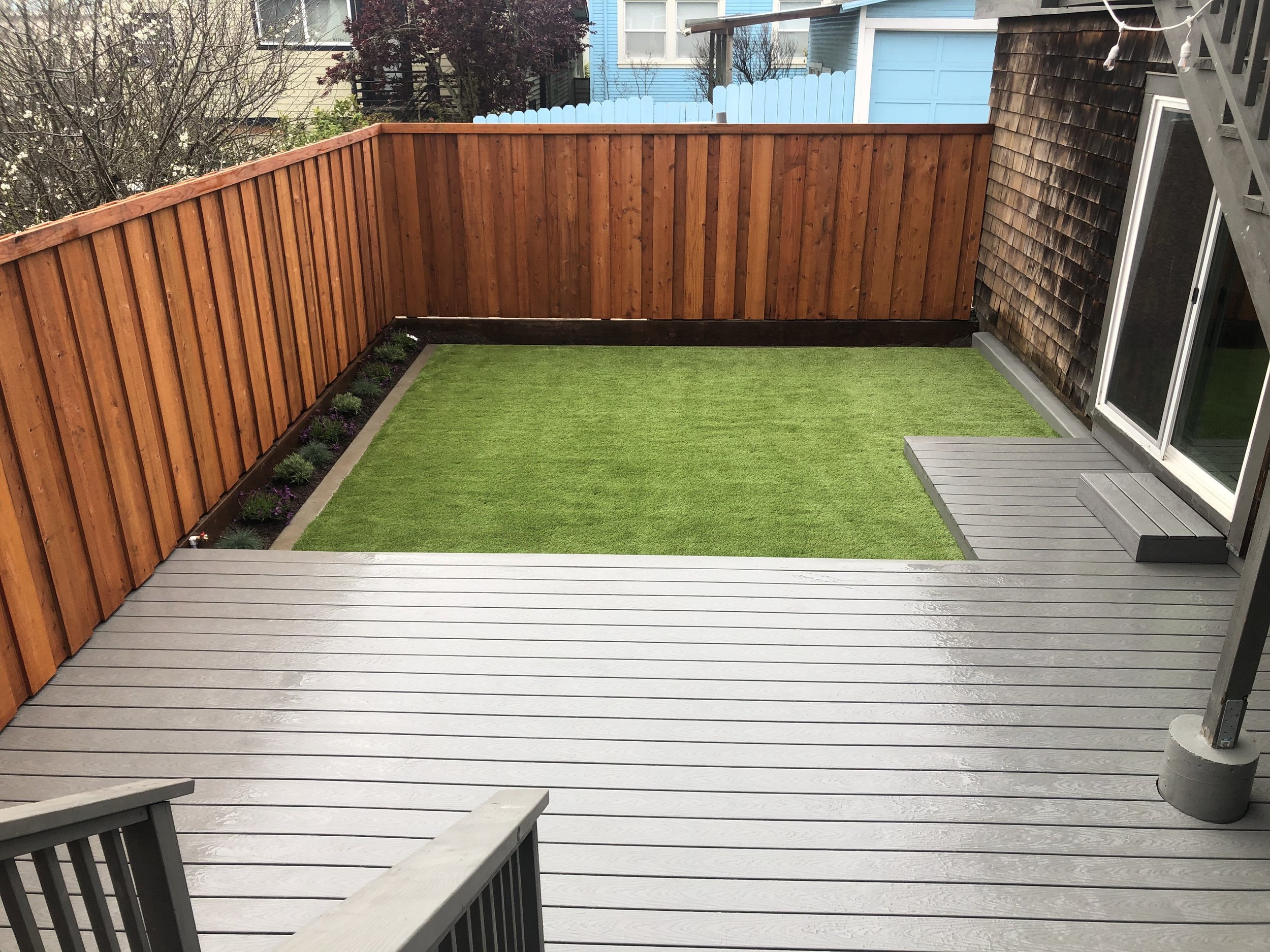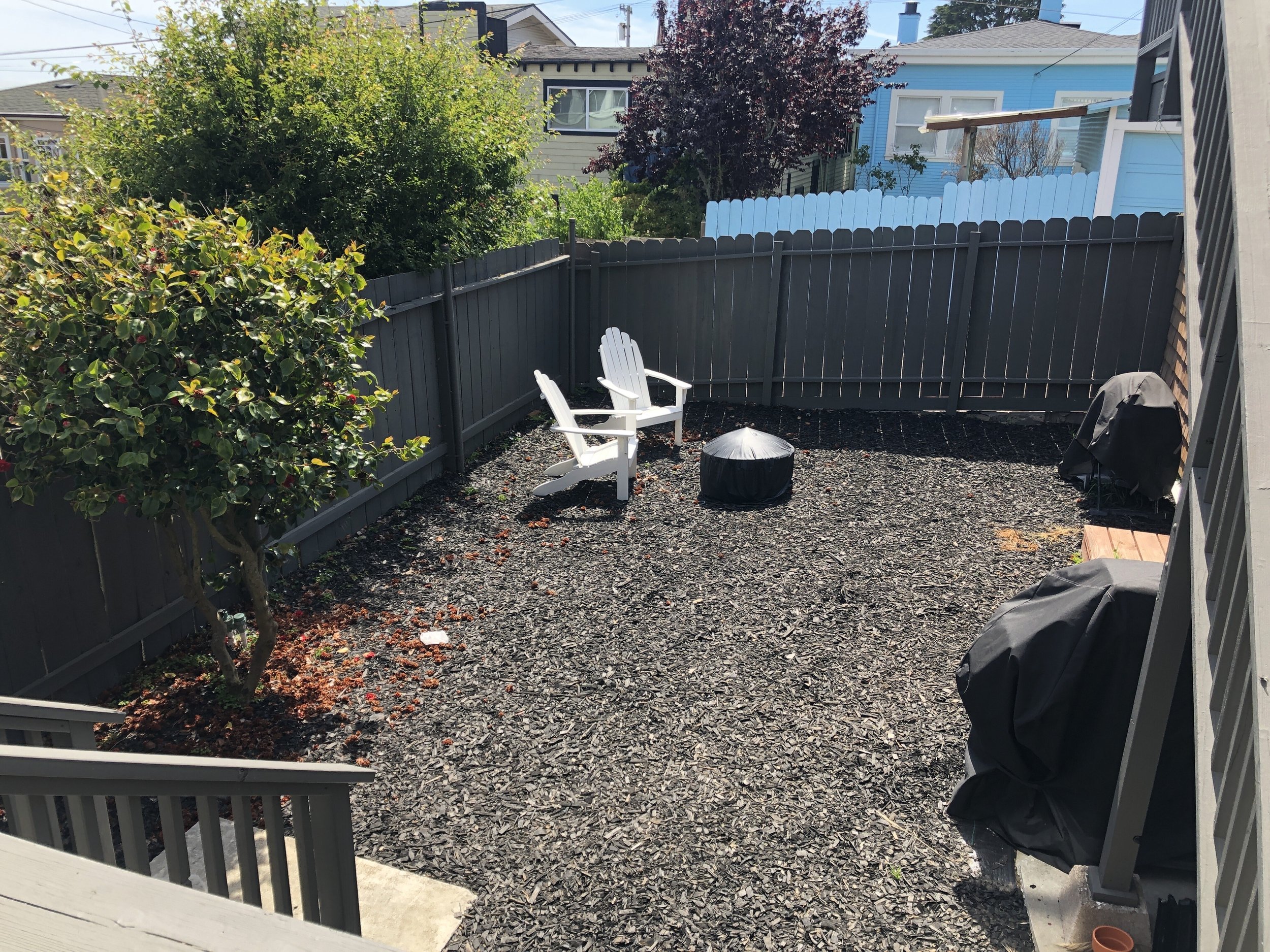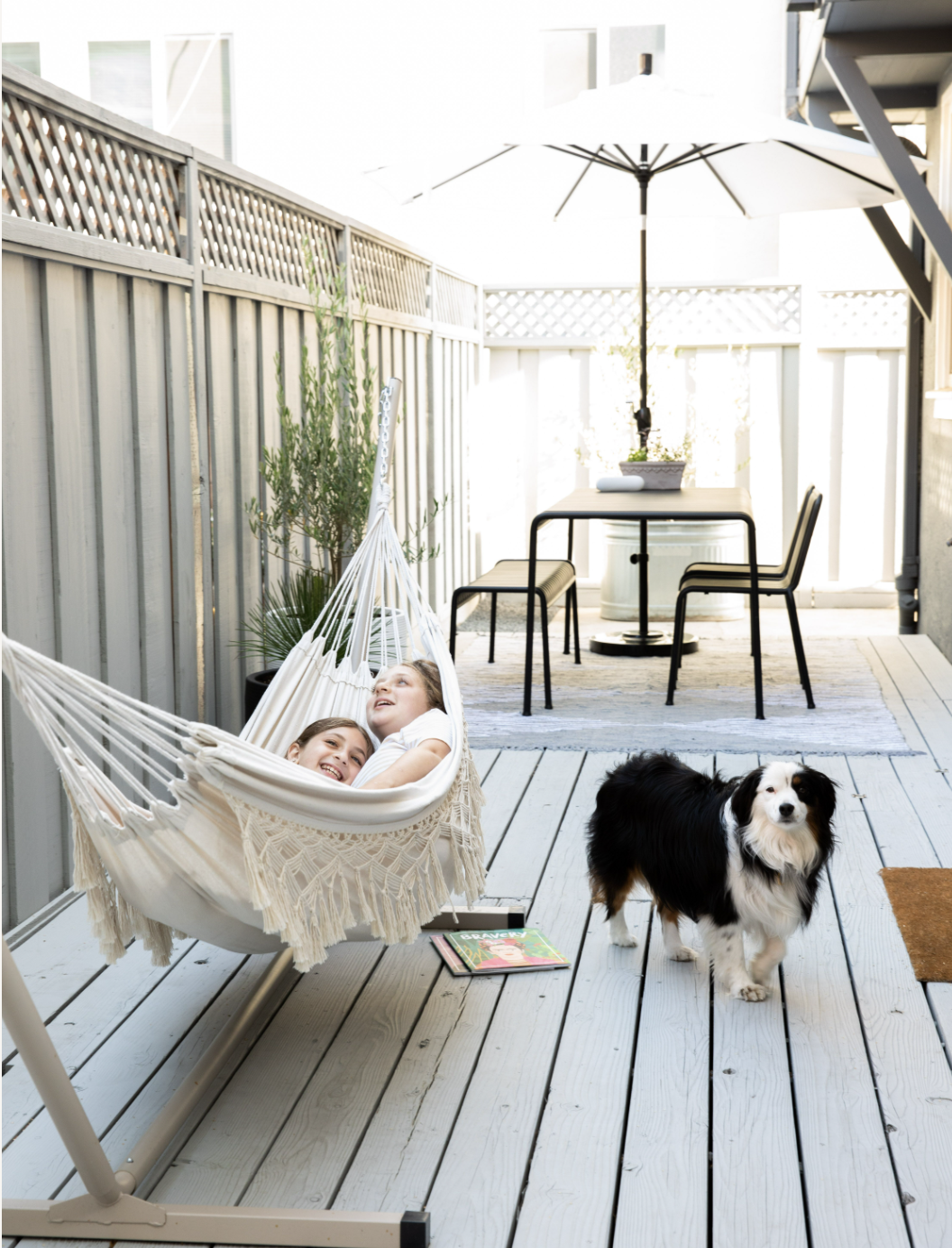A bit about design changes in landscape projects…
Changes are good. In the design phase, we test-drive and revise ideas until we land on a design that achieves our client’s goals and priorities. Change is part of the process.
Changes can also be inconvenient. When installation is already underway, new design changes can add expense, delay, and hassle, which everyone would rather avoid.
Contractor installing cement walkway
Ideally, all changes would happen during the design phase of a project.
In reality, it’s quite common for designs to undergo additional changes during the build phase of a project, when a client is working in the field with their contractor.
This is a good thing! Particularly when designing online, working with your contractor to develop last-mile design adjustments is a key step to make sure your design properly accommodates your site and your budget.
Below, we’ll talk through some design changes common to the build phase, and share a few tips for handling those changes as productively and efficiently as possible.
Yardzen Pro contractor shares build progress compared to 3D rendering in Menlo Park, CA
BE A GOOD PARTNER
Be mindful of how you work with your contractor. A positive relationship between client and contractor yields the best project outcomes.
Stay engaged and communicative. You’ll arrive at the best design adjustments most efficiently if you understand both the underlying issues and the design options available to deal with them. Make sure you establish clear communication channels with your contractor early on, respond to any questions they have expediently, and align with them on their work plan.
FOCUS ON GOALS
Most projects end up installed differently than their designs indicate. Sometimes the differences are slight, other times more noticeable, depending on the factors affecting the project.
Keep an open mind when your contractor suggests design solutions, and stay focused on your goals for the look, feel, and function of your design. It’s easy to fall in love with the design that emerges from the studio, but it pays to hang on to the spirit of iteration and stay open to new ideas all the way through to project completion. Design solutions put forward by your contractor will be rooted in real world experience, solutions-oriented, and worth your consideration.
(If you do want a second opinion on changes that you and your contractor are considering, you can always feel free to reach out to your Yardzen contact for assistance.)
Completed back yard by Yardzen Pro in La Mesa, CA
CHANGE EARLY
It’s best to make adjustments to your design as early in the build phase as possible, namely during the bidding process.
Contractors usually begin a project by walking the site, evaluating the design, and then producing an installation cost estimate, or “bid”, for the client to approve.
This process can reveal unforeseen circumstances, costs, and opportunities, all of which can require you and your contractor to work together to develop design changes. These changes may be necessary to adapt to new site conditions, to reduce project costs, or to implement design gains the contractor may have identified.
It’s very common and relatively efficient to deal with these changes at this early stage in the build process. Doing so later, after a contract is signed or ground has been broken, is more complicated and costly.
Yardzen Pro contractor putting finishing touches on Yardzen designed back yard
MATERIAL SUBSTITUTIONS
Material substitutions are among the most common changes to occur during the build phase.
For certain materials like pavers, stone, or retaining wall blocks, Yardzen designs suggest a design, size, and style, but leave final material selections to the client and their contractor. This is because many materials are best sourced locally, for cost, sustainability, and design suitability reasons. Your contractor is the best source of insight into which locally-available building materials make the most sense to achieve the look established in your Yardzen design.
This approach ensures the right materials are used for the job, but it leaves some room for material prices to change between the estimated costs of the design phase and the costs listed in a bid.
When materials are bid higher than anticipated, work with your contractor to identify more cost-effective material substitutions. Alternately, you can identify other areas of the design to cut budget, should keeping certain materials be a high priority for you.
Materials substitutions can also be triggered by availability. Materials like gravel and mulch, as well as products like light fixtures, pergola kits, or composite decking, may not be available within your region or timeline in the exact style shown in your design. In this event, you’ll want to work directly with your contractor to find a suitable replacement.
When selecting materials, we recommend getting samples - and doing so early - to help you confirm your choices. Aim to commit to materials before final bids are prepared. Knowing the exact materials you will be using allows your contractor to be as accurate as possible when preparing your final bid, and lowers the chance of budget surprises later in the build process.
Yardzen Pro contractor shares progress on the planting of privacy trees in Greenwich, CT
PLANT SUBSTITUTIONS
Plant substitutions are also common in the build phase. Yardzen takes care to use plants that are commonly available at nurseries, but occasionally plants indicated in a design will not be locally available. When this occurs, your contractor and your local nursery will be ready to help you choose appropriate replacement species. Often, it can be best to simply repeat a species used elsewhere in your design - repetition of species is a tried and true approach to making planting designs feel cohesive.
Our advice: talk to the nursery, they’ll know about what plants perform well in your area better than anyone.
Differences in anticipated and actual light patterns on a site can also lead to substitutions. Poor satellite imagery or heavy tree canopy sometimes make estimation of light patterns challenging, particularly at a small scale. When a design places plants in unsuitable light conditions, you’ll want to work with your contractor to sub in species that thrive in the actual light conditions.
Again, we suggest considering other species already used in your design to act as substitutes to maintain a cohesive planting aesthetic, and encourage you to speak with local nurseries for insight on plant performance in your area.
PLANT SIZES
Smaller plants (one gallen, rather than five gallon) are cheaper to buy, but take longer to grow before they achieve maturity. Buying smaller plants is a common strategy to reduce project costs when bids come in over budget, provided you can tolerate the wait.
There are pros and cons to buying small vs. big. We often suggest buying big on a few key plants - the ones with the most visual impact on your yard - but going small on less noticeable plants. Talk through your options with your contractor to confirm an approach that makes sense for you. Once you decide on sizes, stick to that plan.
PREPARE FOR PERMITS
Your contractor will know whether any features in your design require a permit. If they do, develop a plan with your contractor for who will handle the permitting so there is a clear owner of that process.
In some cases, it may be better to revise a design so that it no longer requires a permit, rather than go to the effort and expense of getting a permit. Discuss this option with your contractor. Whatever direction you go, make sure you are both aligned on a plan to deal with permit requirements. Doing so will minimize the impact permitting has on your project.
San Francisco, CA Yardzen project progress shared from Yardzen Pro contractor
CAD REVISIONS
While it’s always a good idea for you to remain informed about the “what” and “why” of changes happening to your design, it’s not always necessary to officially document those changes.
When design changes are identified during the build phase, contractors tend to approach them differently.
Many contractors will simply work the changes into their bid and work plan. This is especially common for small-scale changes or plant and material substitutions.
Other contractors may want to update your plan drawings to make sure the changes are accurately reflected. This approach has the advantage of aligning everyone around a common set of documents, and is useful with larger scale or complex design adjustments.
Updating plan drawings can also be necessary when HOAs or other regulatory agencies need to approve a project.
Yardzen is happy to offer free plan drawing revisions throughout the build phase. Should you or your contractor wish to update your plan drawings, simply mark up your existing set with editorial marks to tell us what needs to change, share them with us, and we’ll provide updated plans to you in a matter of days.
Yardzen Pro contractor installing artificial grass for a Yardzen project in Winter Park, Florida
CHANGES DURING INSTALLATION
Sometimes design changes during the installation are unavoidable.
You can mitigate the impact of mid-installation changes by staying present and available throughout the installation phase. Nothing beats being on site to immediately respond to questions your contractor may have for you about how your design should respond to new issues. If you have to be away, try to stay available via phone.
The type of contract you have can also make it easier or harder to deal with changes during installation.
A time and materials contract estimates a price prior to installation, but ultimately invoices you based on predefined labor and material rates. This kind of contract is fairly flexible with respect to design changes - the predefined rates are applied to the new design features, and the project will continue.
A fixed price contract, which sets a final price prior to breaking ground, is less accommodating. These usually require a change order to update the scope of work and project cost in the contract. Dealing with change orders is costly and time consuming, and can be a morale killer for a project. They are best avoided whenever possible.
Occasionally, contractors working under fixed price contracts are willing to invoice changes separately and skip the change order process, but don’t count on this. If you are going with a fixed price contract, take extra care to outline all design changes with your contractor prior to installation.
In the right context, change can be an asset, even when it occurs during the build phase. Follow the tips above and embrace collaboration with your contractor and you’ll be able to navigate any surprises that come your way. And of course, feel free to reach out to Yardzen for any extra assistance you may want during the build process!




























